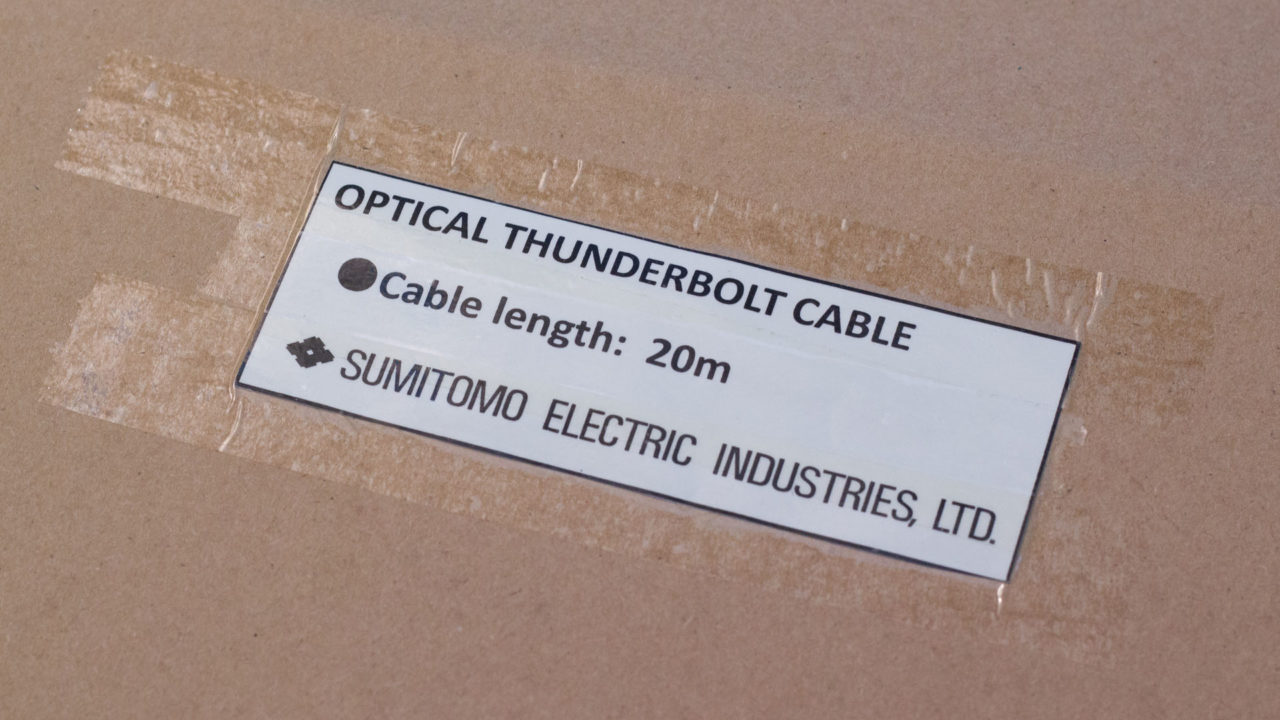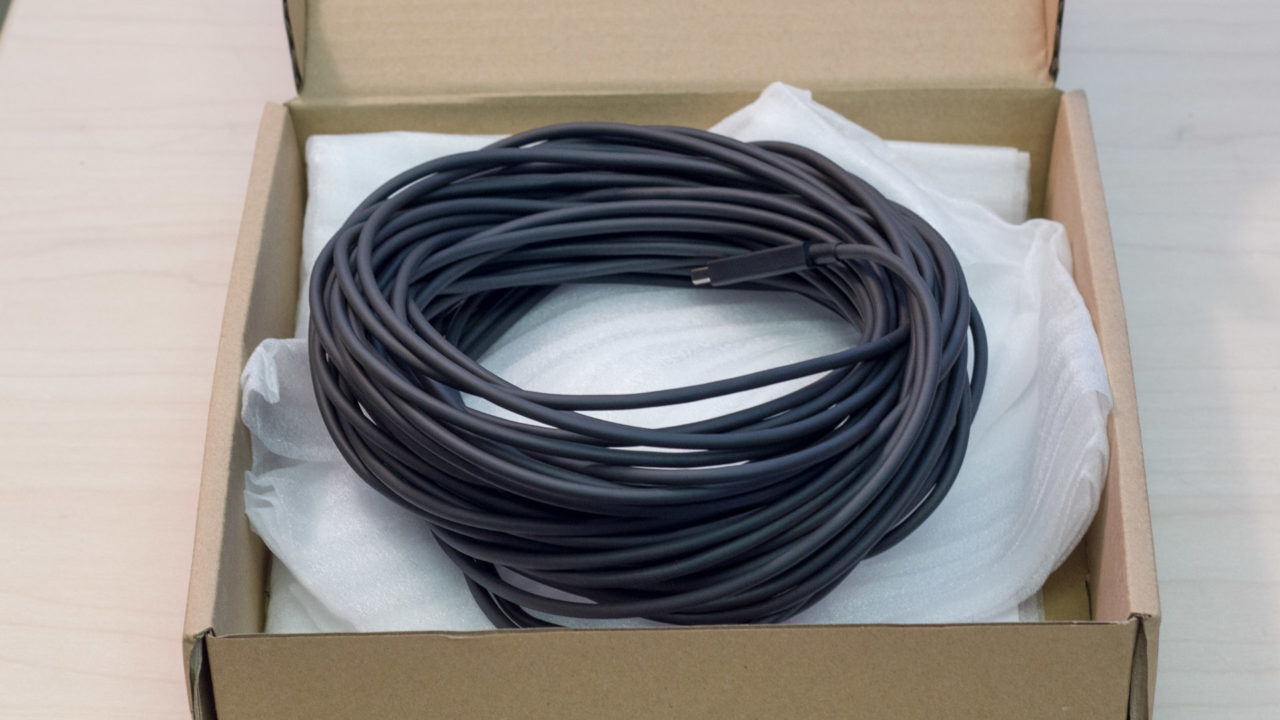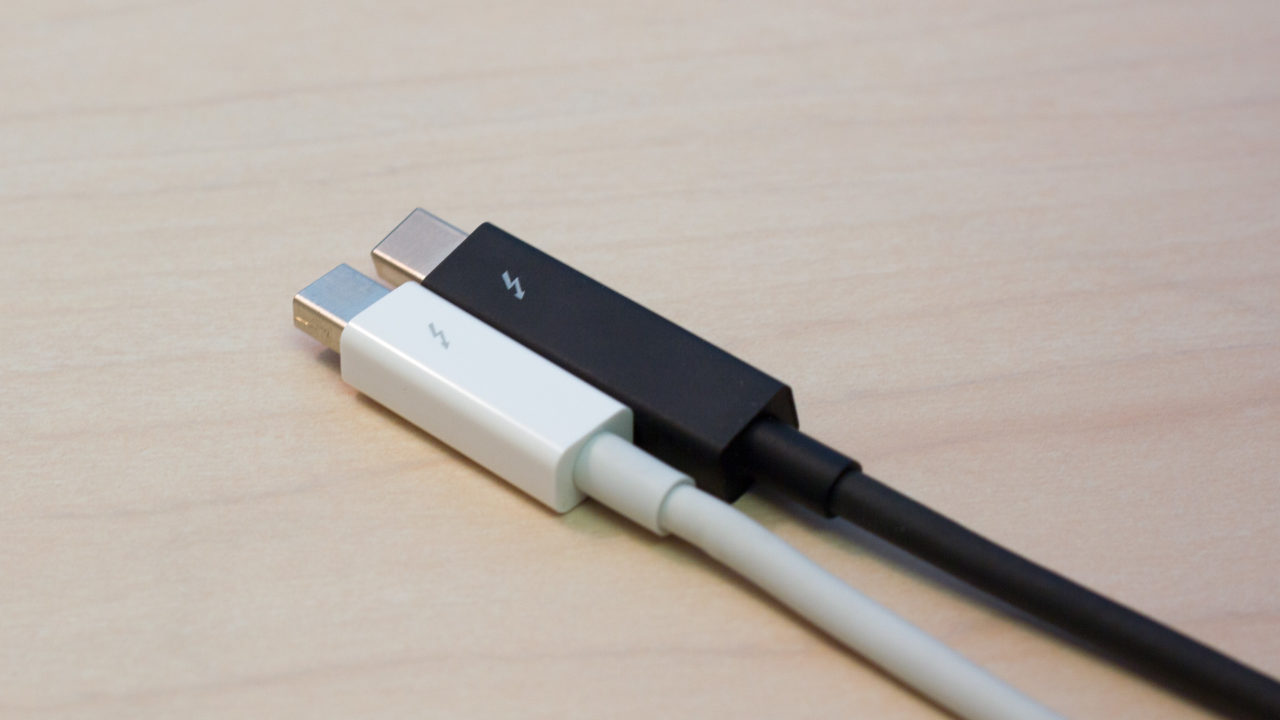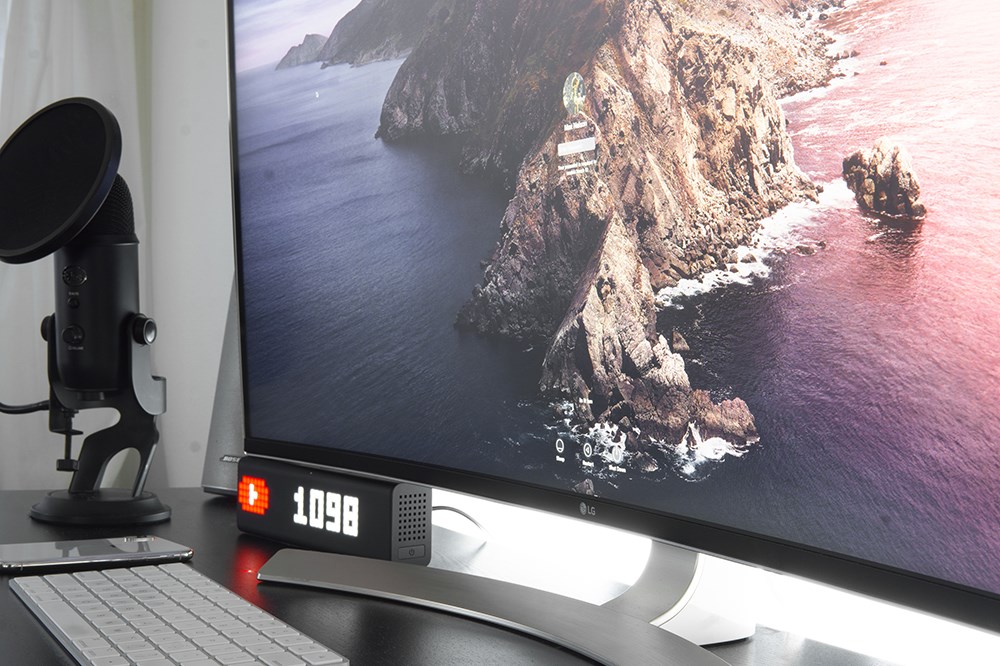OWC Optical Thunderbolt Cables Can Revamp Your Workspace, For a Price
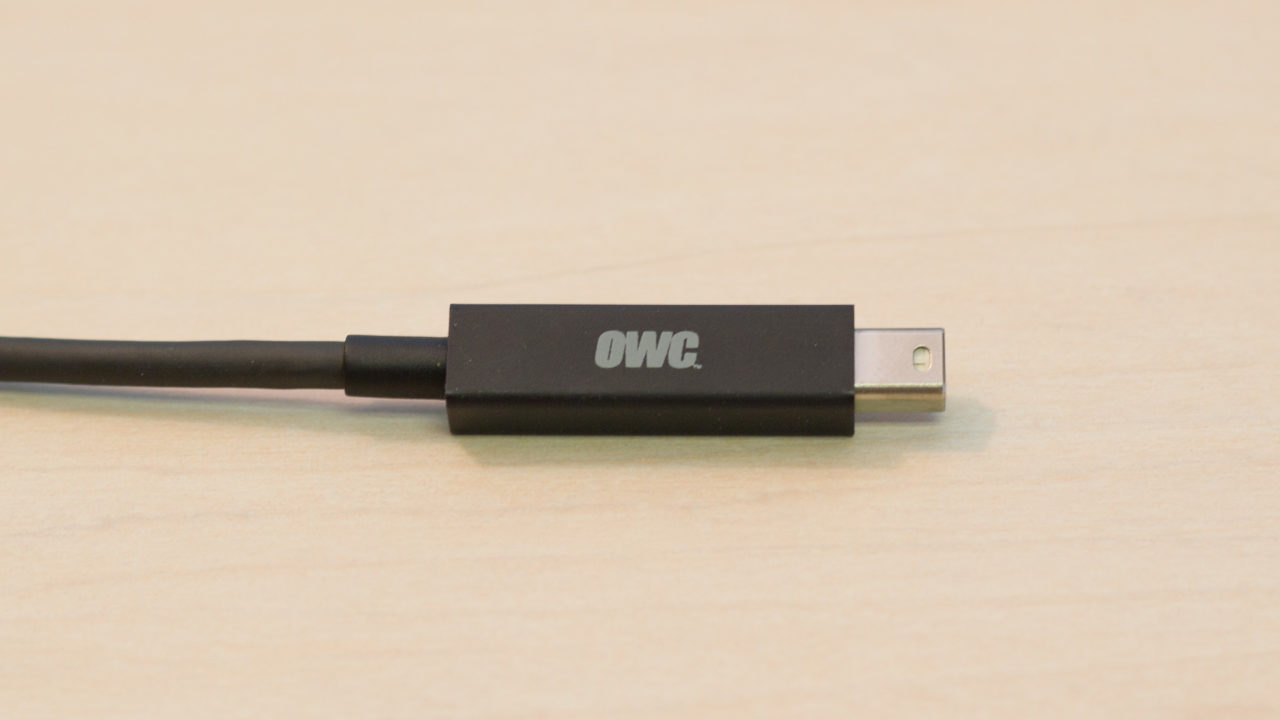
Thunderbolt was originally designed to be an entirely optical technology (Intel codenamed it Light Peak during its development), but costs and technical limitations led to the copper-based implementation that has dominated the market since its launch by Apple in 2011. After more than three years, however, optical Thunderbolt cables are finally starting to hit the market. We’ve spent a few weeks testing a 20-meter optical Thunderbolt cable from Other World Computing. Read on to see if optical Thunderbolt cables are just what your workflow is waiting for.
In general, optical Thunderbolt cables offer three key benefits:
- They’re available in significantly longer lengths than their copper-based counterparts. OWC and companies such as Corning offer lengths up to 60 meters (about 197 feet), while current copper cables max out at 3 meters (about 10 feet).
- They’re slightly thinner, lighter (at equivalent lengths), and more flexible than copper-based Thunderbolt cables. This opens up new cable routing possibilities.
- They’re completely compatible with existing Thunderbolt devices and chipsets, including the new Thunderbolt 2 specification, meaning that you can swap optical cables into your current setup without any issues (with some exceptions, identified below).
But there are also some important caveats to consider that may make optical Thunderbolt cables less attractive than copper:
- Optical Thunderbolt cables cannot provide bus power. This means that portable devices like the Buffalo MiniStation external drive won’t work when connected directly to an optical Thunderbolt cable. You can still add bus-powered devices to your Thunderbolt chain, but you’ll need to have a powered passthrough device, like the Promise Pegasus2 RAID array, between the optical Thunderbolt cable and the bus-powered device, and connect the two with a copper cable. Note, however, that some optical cables labeled “active” act as a hybrid between optical and copper, and can provide some level of bus power.
- Most Thunderbolt products are expensive, especially when compared to more ubiquitous technologies like USB 3.0, but optical Thunderbolt cables take things to a whole new level. While we hope that prices will fall over time, current prices for optical Thunderbolt cables run around $300 for 10 meters, $520 for 20 meters, $650 for 30 meters, and a staggering $1,299 for 60 meters. If your workflow needs the benefits offered by optical Thunderbolt cables, however, the price may be justified.
Turning to the OWC 20-meter cable specifically, the company sources the cable from Sumitomo Electric, a Japanese firm that was one of the first to begin manufacturing optical Thunderbolt cables.
The cable comes neatly wrapped in a nondescript brown box. Upon removing the cable, you’ll immediately notice that it feels far lighter and more flexible than standard copper-based Thunderbolt cables. The OWC/Sumitomo design arrives in a nice black color with a soft rubber finish. The familiar Thunderbolt logo appears on one side of each end’s connector, while the OWC branding is printed on the opposite side.
Cable weight and flexibility aside, a key difference between optical and copper Thunderbolt cables is the length of the connectors. The connectors share identical measurements in all other respects, but the optical Thunderbolt cable connector is about 30 percent longer. This shouldn’t be a problem for most users, but those with devices positioned close to a wall will want to ensure that they leave enough room for the optical cable connector’s extra length.
In terms of performance, we measured sequential read and write performance to a Promise Pegasus2 Thunderbolt 2 RAID array, comparing the OWC 20-meter optical Thunderbolt cable to a 3-meter copper-based cable.
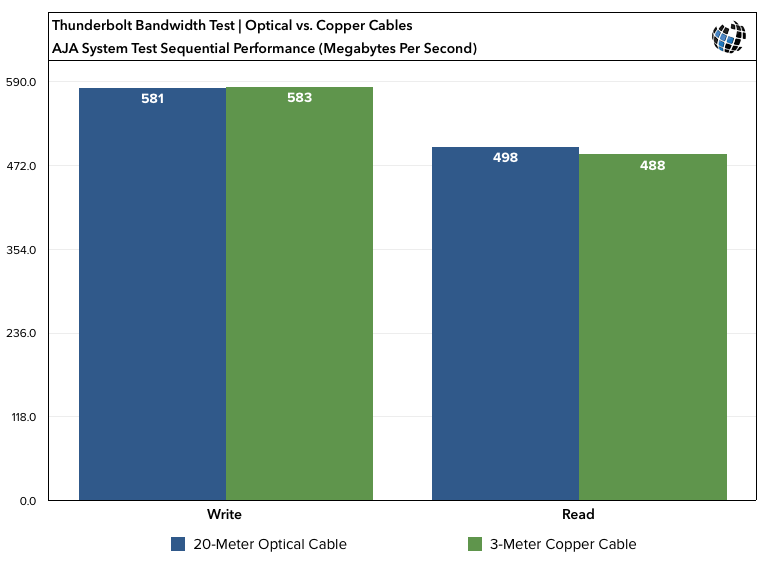
There’s a slight difference in performance, with the copper cable better in writes and the optical cable better in reads, but, as should be expected, there’s no significant difference in performance between the two.
And that’s because the benefits of optical Thunderbolt cables, mentioned earlier, are all about flexibility: the flexibility to move your Thunderbolt devices and computers away from your workstation, the flexibility to make use of Thunderbolt Networking, and the literal flexibility to bend and route the cables in ways that were too risky with copper.
For TekRevue specifically, the introduction of optical Thunderbolt cables into our office setup let us move our entire group of Thunderbolt devices — which currently includes a Promise Pegasus2 R4, Promise Pegasus R6, Western Digital My Book Thunderbolt, and LaCie Little Big Disk — to the far corner of the room, giving us more space near our desk to work with review products, scanners, paperwork, and so on. Thunderbolt is a great technology that we use every day but, until now, it’s always been closely tethered to our Mac. Optical Thunderbolt cables will therefore be a boon to media professionals who need both high performance and placement flexibility.
Of course, the high cost and lack of bus power support from optical cables indicate that copper Thunderbolt cables aren’t going anywhere soon. But if you’re a professional who needs longer Thunderbolt cables and can justify the cost, you’ll find the OWC optical Thunderbolt cables to be high quality and simple to integrate into your workflow. Just make sure to account for all of your bus-powered devices before you start swapping out cables.
You can pick up optical Thunderbolt cables from OWC right now in 10, 20, and 30-meter lengths for $297.99, $519.99, and $649.00, respectively. All cables include a 1-Year OWC warranty.




